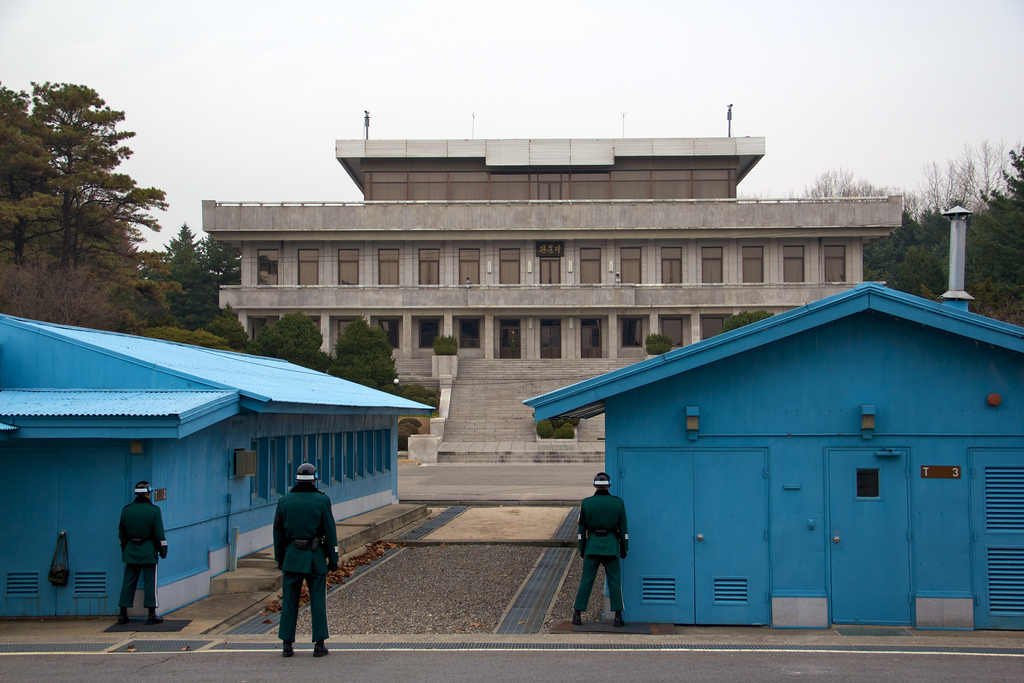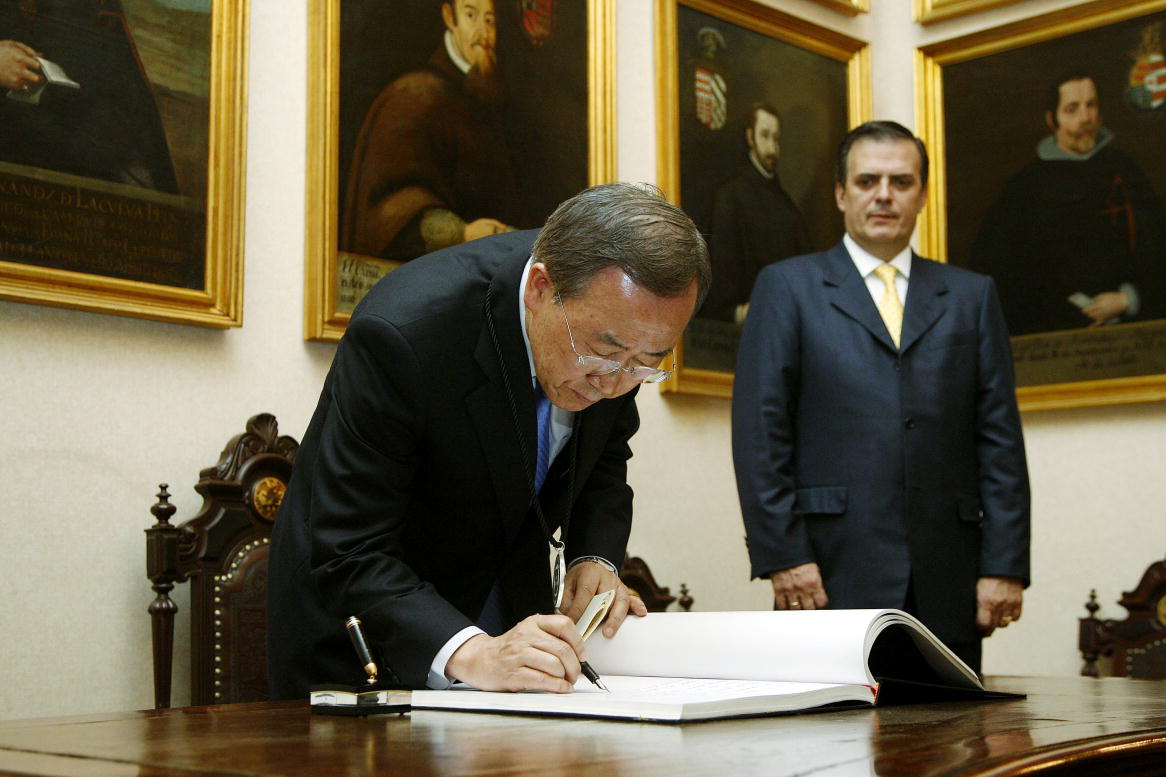By Cullen Hendrix for Denver Dialogues.
Whether appeals to white identity and white resentment propelled Donald Trump – as improbable a major party candidate as we have seen in recent memory (seriously, that happened) – to the presidency-elect[1] of the United States is highly debatable. Trump’s election has been interpreted as part of a broader “global white backlash” and the return of xenophobic politics in the developed world, but the evidence is still not conclusive. What’s not up for debate, however, is that Trump’s election has empowered white nationalists and refocused our attention on racial politics in the United States. Since the election, hate crimes have spiked and white nationalists have hailed Trump’s victory and some of his personnel decisions.
This has caught many by surprise. It might not have if Americans were more used to thinking about the United States in comparative perspective.
I study contentious politics and repression, mostly in Africa. When I think about politics, ethnicity and ethnic identity are never far from my mind. This is especially true in those contexts where ethnicity is a red line for economic, political, and social marginalization: where one’s ethnic identity either qualifies or disqualifies you for a job, housing, membership in a club, or – at least historically – from holding high elected office. That is, ethnic identity is not just about culture, language and/or religion, but it also becomes a vehicle for obtaining and maintaining power.
Social scientists take as given that these conditions obtain in the vast majority of developing countries, which for complex reasons tend to be more ethnically diverse and more prone to intrastate conflict than wealthier, more industrialized or post-industrial societies. Moreover, it is uncontroversial to argue in these circumstances that political competition revolves around ethnicity. But ethnic politics are highly relevant (and climbing with a bullet) in the United States – which is unique among developed, capitalist countries for its long history of domestic slavery and Jim Crow – and increasingly so in Europe, as the countries of the European Union grapple with a mass influx of refugees from the Middle East and North Africa and lingering resentment over the costs of addressing the fallout of the Great Recession.
In the United States, race and ethnic politics (REP) has largely been studied through the prism of minority group politics and political behavior, i.e., black/Latino/Asian American, etc. public opinion and voting behavior. This is not to say ethnic politics scholars ignore power dynamics and the legacy of white oppression of minority groups – indeed, race and ethnicity scholars are more likely than most “Americanist” political scientists to take seriously concepts like power – but simply to point out that REP tends to operate from the assumption that US race and ethnic dynamics are sui generis, rather than a case or set of cases among many. That is, and this is just an impression, so let me know if I’m wrong here, most REP scholars don’t look to Kenya, Myanmar, Sri Lanka, or broader, cross-national work on ethnic conflict to inform their analyses, even if ethnic power dynamics in the United States look more like those cases than we would like to admit.
Here, I outline six “truths” – some inconvenient, some helpful – regarding the comparative literature on ethnic politics and conflict and what it might suggest for both prospects for violence and for addressing the rising tide of white nationalist sentiment in the United States. Rather than focusing on why white nationalism and white resentment are on the rise, I take it as given and focus on what the ethnic politics literature has to say about its likely effects for US politics and ways in which its pernicious message might be marginalized.
Inconvenient Truths
- Demographic decline in the dominant ethnic group – either real or perceived – is often politically destabilizing. According to the Ethnic Power Relations data, a cross-national dataset compiled by researchers at ETH Zurich and UCLA, the United States’ political system had been characterized by white ethnic dominance, a situation in which “members of the group hold dominant power in the executive but there is some limited inclusion of ‘token’ members of other groups who however do not have real influence on decision making”, from passage of the Voting Rights Act in 1965 until 2008, when the first non-white US president was elected.[2] With Obama’s election, whites were re-categorized as a “senior partner” in the government.The move from monopoly to dominance and senior partner mirrors the relative demographic decline of whites. Numerically, whites will lose their majority status in the next thirty years. Cross-nationally, demographic decline in the dominant ethnic group – both real, in terms of population, and perceived – has been associated with greater propensities for conflict, as dominant groups fear a future in which their power will be eroded. Conflict, in turn, can further entrench the importance of ethnic identity.
- Inequality across ethnic groups augers poorly for political stability. There is now a large body of research indicating that inter-ethnic inequality – economic inequality between ethnic groups – rather than ethnic diversity, per se, predisposes societies to political violence. That is, diversity is not conflict-promoting unless ethnic differences map onto political and economic differences. This does not bode particularly well for interethnic cooperation in the United States. For example, Asian Americans have a median household income over twice that of African Americans; white Americans have median household incomes 71% higher than African Americans. However, the literature on horizontal inequalities is mostly concerned with cases in which ethnic groups are more segregated into “ethnic homelands”. Whether the United States fits that description is a matter of some debate. It’s worth noting, however, that the United States is sufficiently economically developed and in a peaceful enough neighborhood that the baseline likelihood of armed conflict here is very, very low.
- Ethnic diversity stymies investment in social welfare – which is more necessary than ever in a more open US economy. There is now a quite large – and oddly, seemingly completely forgotten in the current context – literature on ethnic diversity and how it undermines support for and provision of public goods, both in general and specifically with respect to the United States. Though the mechanisms are somewhat murky, it appears that more ethnically homogeneous societies are willing to support larger levels of social welfare spending; the northern European countries Bernie Sanders loves to cite as examples of capitalism mixed with progressive taxation and social safety nets are among the most ethnically homogeneous polities on Earth. More ethnically diverse societies, in contrast, tend to invest fewer resources in public goods like education, infrastructure, and social safety nets.This matters a great deal. The rise of white nationalism and its milder cousin, white resentment, has co-occurred with – and potentially been caused by – the decline of economic and life prospects for less educated whites. The causes of this decline are complex, ranging from skills-biased technological change and automation of manufacturing to increased trade exposure, particularly from China. Careful but preliminary econometric analysis suggests trade exposure – the loss of jobs due to competition from abroad – was a hugely significant factor in Trump’s victory. And while the United States has some policies in place to soften the blow of increased trade exposure and loss of traditional livelihoods, they are inadequate to the task. Racial/ethnic animus will likely be a barrier to expanding the very social safety nets these newly economically marginalized populations will need, which may only further entrench xenophobic attitudes.
Given this gloomy picture, is there any good news?
Helpful Truths
- Most of the time, interethnic relations are peaceful or even cooperative. The vast majority of the time, relations between ethnic groups – and members of those ethnic groups – are peaceful, if not cooperative. Violent ethnic conflict is the exception, not the norm. This is true in societies with much less consolidated political institutions and at much lower levels of development than the United States. Jim Fearon and David Laitin calculate the ration of actual incidents of ethnic conflict to potential incidents in Africa at less than 0.003.
- Ethnic identity is not static. Turn the clock back to the early 20th century, and the idea of a coherent “European” identity – a notion white nationalists like Richard Spencer cling to as defining whiteness in the American context – is laughable. Hell, go to present-day Kosovo if you need evidence that “European-ness” is not exactly a unified, or unifying, source of identity. Ethnic identity is fluid and ebbs and flows over time. White national identity has been activated, but it can be rendered dormant or at least subservient to other sources of identity and self-identification. The election was certainly ethnically divisive and likely increased the temporary salience of ethnic identity (as elections do in other places). The question is whether President Trump will move away from the divisive, ethnically-charged rhetoric Candidate Trump used to win office.
- Cooperation works best when groups self-police. Opening his seminal article with Jim Fearon on interethnic cooperation, David Laitin relates the following anecdote:I grew up in a Jewish section of Flatbush that bordered an Italian neighborhood. Sometimes on our way to school, some Italian kids-nearly all of them went to parochial schools-would hassle and even attack us. Although they lived only a few blocks away, we didn’t even know their names. We just called them “the St. Brennan’s kids.” Our parents would see our injuries and report the incidents to our school principal, who was Jewish, but from a different neighborhood. He contacted the relevant authorities at St. Brennan’s, who would investigate the matter and punish the culprits. The funny thing was, no one ever seemed to think of calling the police. They were Irish.To Fearon and Laitin, the key to maintaining positive interethnic relations is in-group policing: to maintain harmony, members of the in-group must check the bad behavior – the race baiting, threats, and outright violence – of members of their own group. The solution wasn’t to get a larger gang of Jewish kids together to rumble with the Italians. That type of logic only escalates conflict. Rather, the solution is for leaders within ethnic communities to police the behavior of the agitators among them. That means, my white friends who do not want to see white nationalism take hold in the United States: It is on us. We have to call it out. We have to marginalize these voices and push white nationalism back to the fringe. We cannot and should not expect others to do it for us.
In this post, I’ve tried to bring insights from the comparative literature on ethnic politics and ethnic conflict to bear on the rise of white nationalism in the United States and what can be done about it. What did I miss? And how can scholars like myself re-engage with US-focused scholars around these issues?
[1] As of November 28, 2016, anyway. It’s been that kind of year.
[2] Prior to 1965, whites exercised monopoly political power, excluding all other ethnic groups.






7 comments